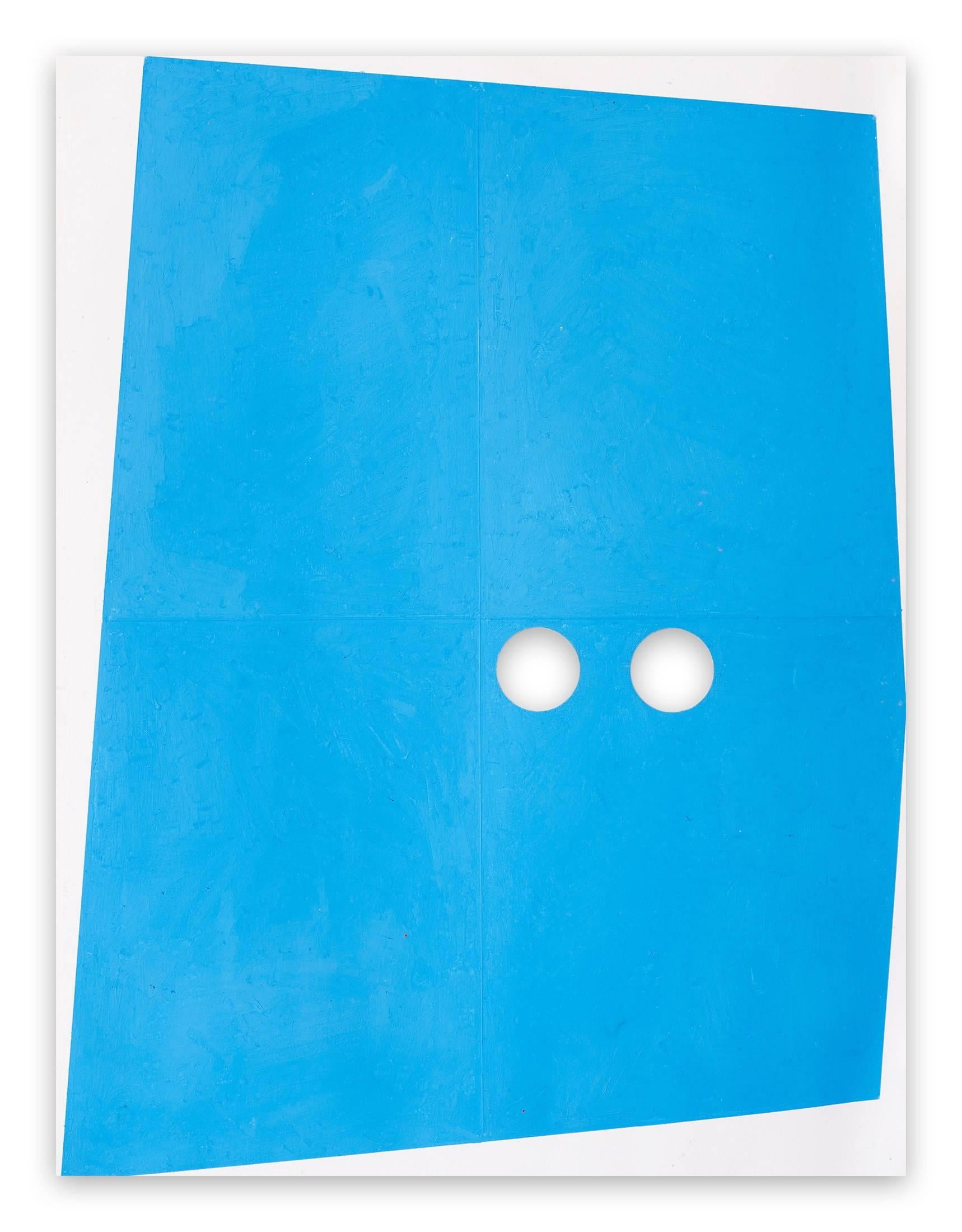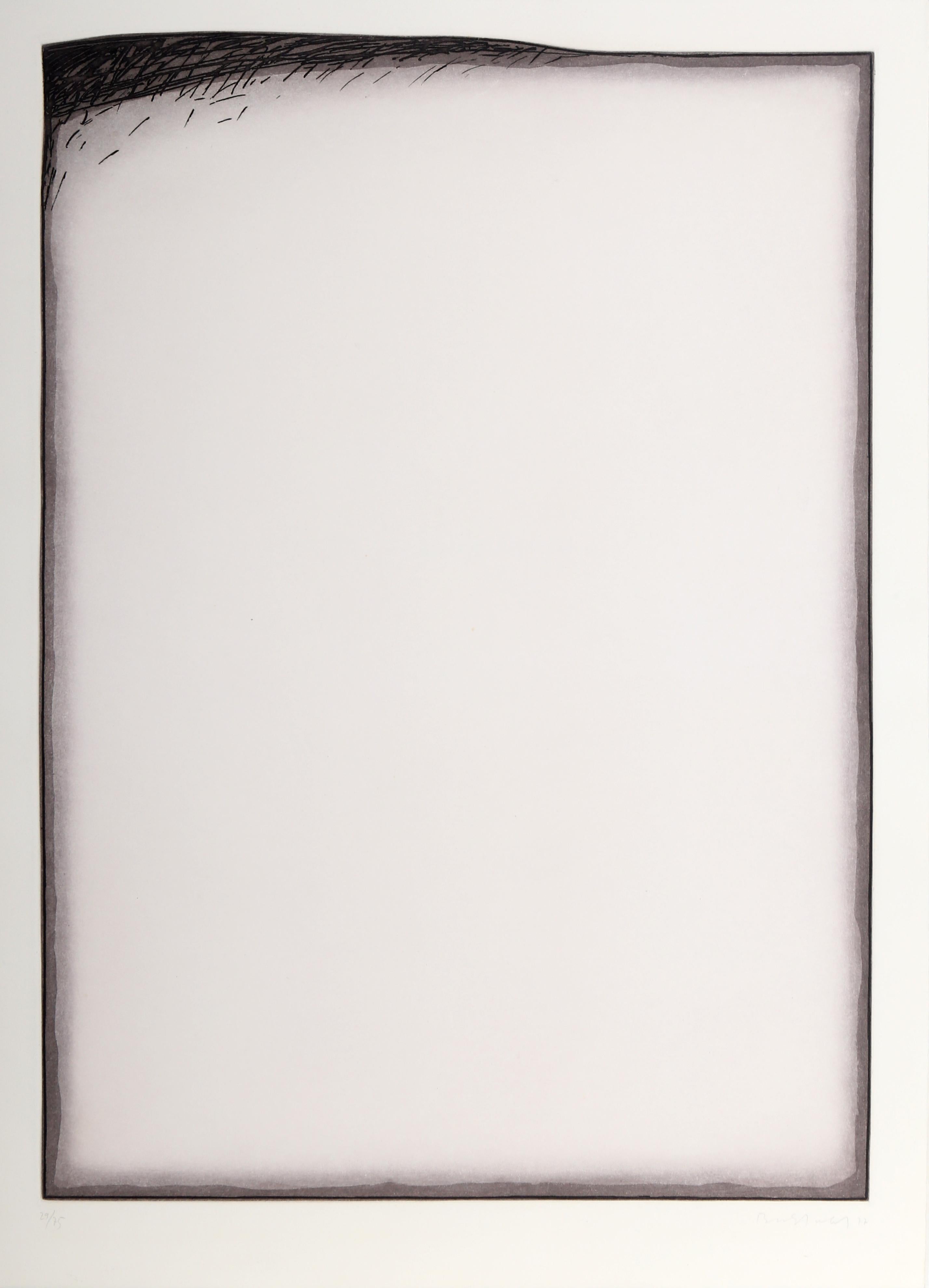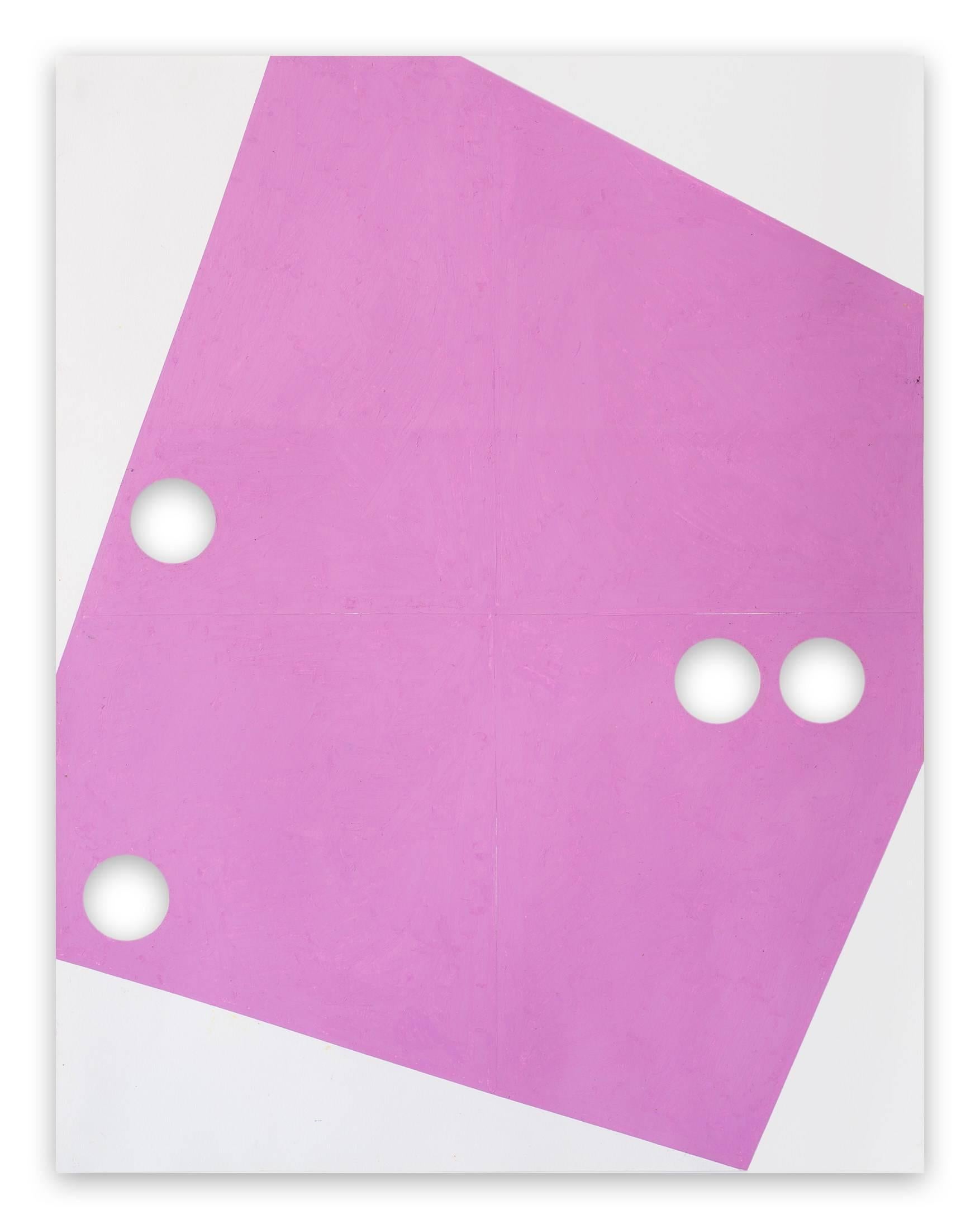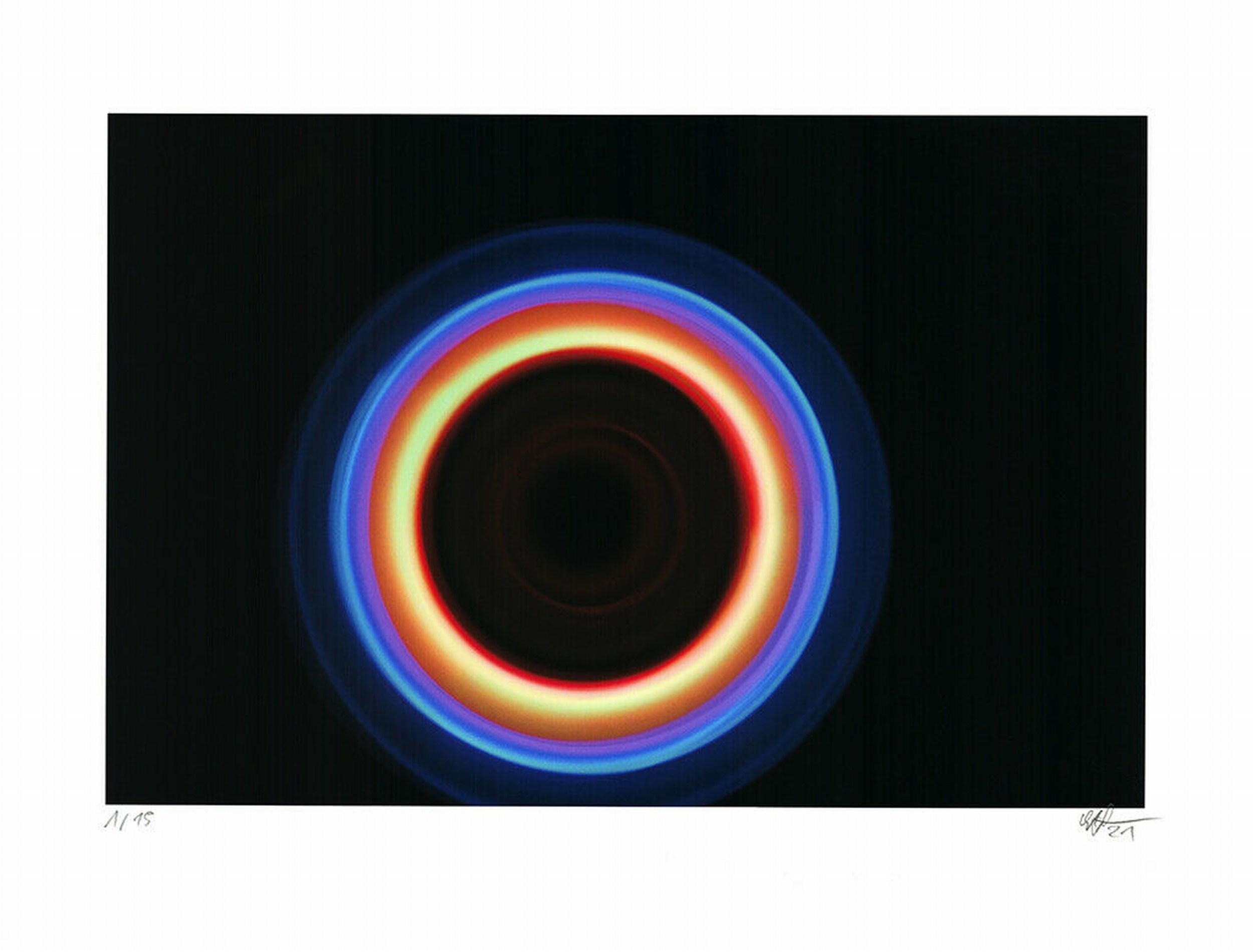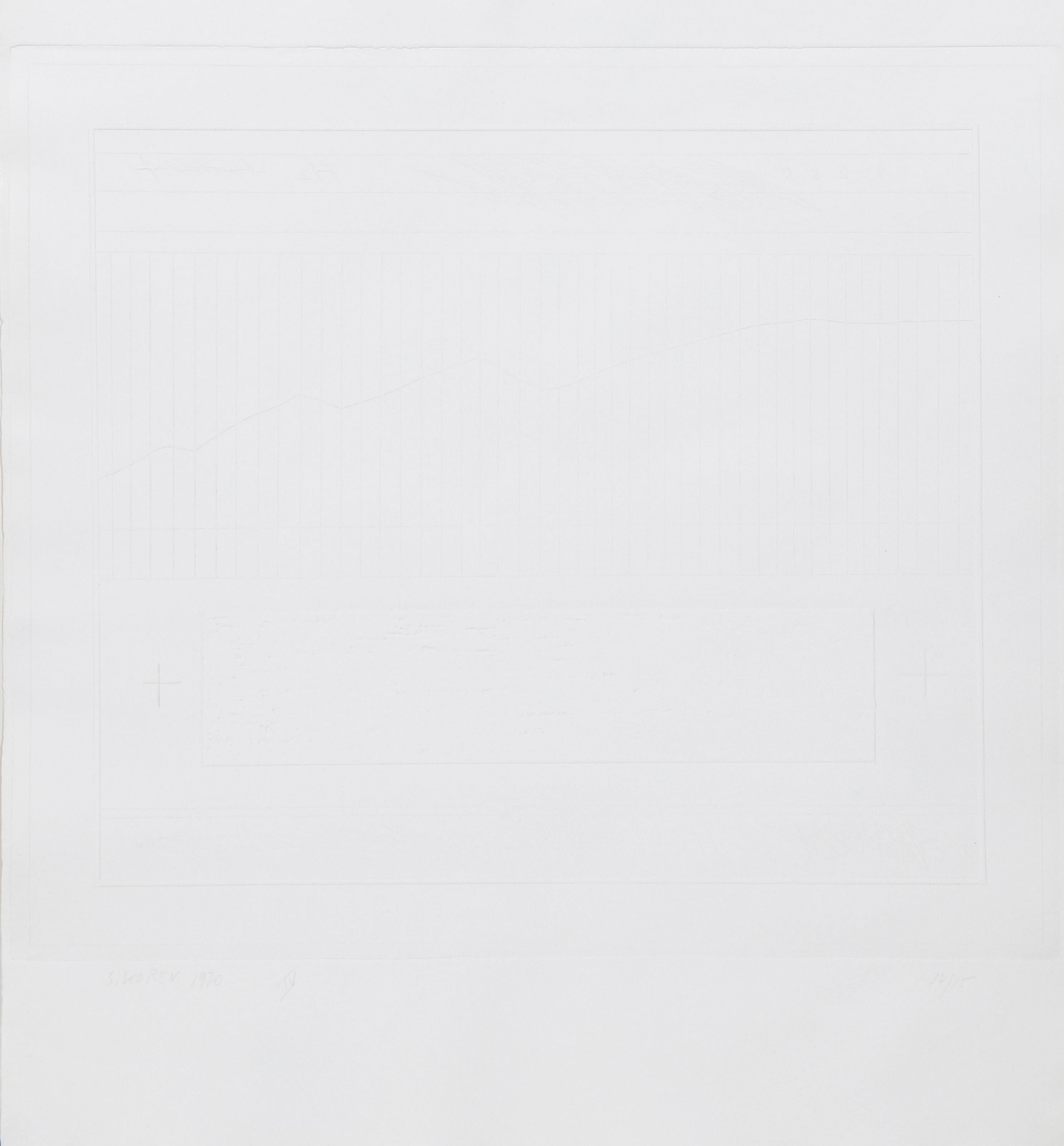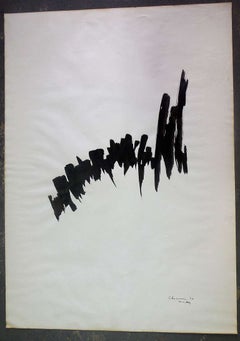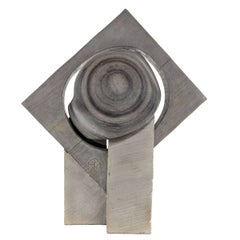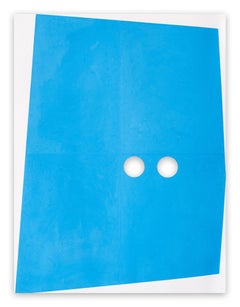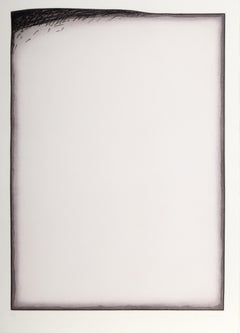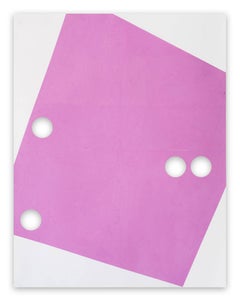Items Similar to UNTITLED (HOLLOW A 400), ED. 20/20
Want more images or videos?
Request additional images or videos from the seller
1 of 6
Corban WalkerUNTITLED (HOLLOW A 400), ED. 20/202005
2005
$1,100
£856.42
€974
CA$1,582.64
A$1,738.46
CHF 908.53
MX$20,732.54
NOK 11,504.43
SEK 10,717.34
DKK 7,278.19
About the Item
Genre: Minimalism
Subject: Abstract
Medium: Etching
Surface: Archival Paper
Country: United States
Dimensions: 22.25" x 22"
Dimensions w/Frame: 23.25" x 23.25"
CORBAN WALKER
Dublin, Ireland, b. 1967
Corban Walker is an artist known for his investigations of perceptions of scale and architectural constructs.
Standing four-feet tall, the artist’s personal relationship between self and the built environment is fundamental to the way he defines and develops his work. Embracing concepts of both architecture and minimalism, Walker uses specific local and cultural philosophies to encourage viewers to reexamine the way they conceptualize, navigate, and interact with their surroundings.
The artist’s work is marked by carefully considered shifts in proportion and balance and is also distinguished by a diverse use of materials and media ranging from painting, drawing, photography, digital art, and sculpture to large-scale and site-specific installations.
Selected Collections
S. R. Guggenheim Museum, New York
Irish Museum of Modern Art
Arts Council of Ireland
Mitsubishi Estate Co. Tokyo
Crawford Municipal Art Gallery
University College Dublin
Bank of Scotland (Ireland)
2013 Come Together: Surviving Sandy, Industry City, New York
Hurry, collaboration with Jean Butler, Project, Dublin, Ireland
2012 Watch Your Step, Flag Art Foundation, New York
2011 Dublin Contemporary 2011, Dublin, Ireland
Twenty, Irish Museum of Modern Art, (IMMA) Dublin, Ireland
Moving Image Art Fair of Contemporary Video Art, New York
2010 50 years at Pace, The Pace Gallery, New York
New Editions and Mono prints, Pace Editions, New York
Reflective Reflexion, Curatorial Research Lab, Winkleman Gallery, New York
Size DOES Matter, Curated by Shaquille O’Neal, The Flag Art Foundation, New York
- Creator:Corban Walker (1967)
- Creation Year:2005
- Dimensions:Height: 23.25 in (59.06 cm)Width: 23.25 in (59.06 cm)
- Medium:
- Movement & Style:
- Period:
- Condition:
- Gallery Location:Surfside, FL
- Reference Number:1stDibs: LU38211766242
About the Seller
4.9
Platinum Seller
Premium sellers with a 4.7+ rating and 24-hour response times
Established in 1995
1stDibs seller since 2014
1,837 sales on 1stDibs
Typical response time: 1 hour
- ShippingRetrieving quote...Shipping from: Surfside, FL
- Return Policy
More From This Seller
View All"Untitled"
By Tom Baldwin
Located in Surfside, FL
Recently graduated from Pasadena’s legendary Art Center College of Design, Tom Baldwin created the series of inkjet prints Japanese Gardens in 1996 on his computer, using then-nascen...
Category
20th Century Abstract Prints
Materials
Screen
"Untitled"
By Tom Baldwin
Located in Surfside, FL
Recently graduated from Pasadena’s legendary Art Center College of Design, Tom Baldwin created the series of inkjet prints Japanese Gardens in 1996 on his computer, using then-nascen...
Category
20th Century Abstract Prints
Materials
Screen
$1,100
Untitled Large Painting (study for a sculpture)
By Peter Chinni
Located in Surfside, FL
Large brush on paper painting. signed and dated. Rome, Italy 1962. Peter Chinni is an internationally celebrated artist, painter, printmaker and sculptor of Italian descent. At 19 C...
Category
1960s Abstract Drawings and Watercolors
Materials
Paper, India Ink
Abstract Minimalist Geometric Sculpture
By Adolph Dioda
Located in Surfside, FL
Adolph T. DIODA (1915-1991)
Birth place: Aliquippa, PA
Lived in West Aliquippa, PA; Detroit, MI; Phila. & Jenkintown, PA
Profession: Sculptor, educator
Studied: Carnegie Inst Technol; Cleveland School of Art; Barnes Fnd., Art Student League New York, NY; also with John B Flannagan, New York.
Exhibited: WMAA, 1939-40; Carnegie Inst., 1941; AIC, 1940, 1951; Sculpture Int., Philadelphia Mus. of Art, 1940-49; AA Pittsburgh, 1941-45; Carved in Stone, Bucholtz Gallery, New York, 1945; PAFA, 1946-47 & 1968 (prize, 1947); Philadelphia A. All., 1951; Carlen Gal., Philadelphia, 1951; 2-man exh. with William Kienbusch...
Category
1970s Minimalist Abstract Sculptures
Materials
Stone, Marble
Pencil Signed Abstract Geometric Graphic Design Lithograph Print, Bauhaus Artist
By M. Peter Piening
Located in Surfside, FL
M. Peter Piening was born on March 14, 1908 in Grabow, Germany. He began his education at a private school in Italy, studied at the Jesuit school of Kloster Ettal in Bavaria, and attended the German Stettin Gymnasium, where he graduated in 1926. Between 1926 and 1928 Piening studied design at the Bauhaus in Dessau, Germany. There he was taught by multiple famous twentieth-century artists, including Joseph Albers, Paul Klee and Mies van der Rohe. After receiving his master’s degree from the Bauhaus in 1929, Piening enrolled at the University of Berlin and obtained his PhD in philosophy in 1931.
Piening spent his early career free-lancing as an illustrator and artist for various publishing companies, eventually settling in Paris to work for Condé-Nast’s French publication of Vogue. In 1934 he moved to the United States to work in Condé-Nast’s New York City office. For the next two decades, Piening worked for many important advertising agencies and magazine publishers, including the N. W. Ayer and J. Walker Thompson agencies and Life and Fortune magazines. As art director for Life in the 1930s and for Fortune in the 1940s, Piening completely redesigned the layout of each magazine. He also redesigned the layouts for thirty-four other major American magazines, including Town & Country and Cosmopolitan.
Through his design work, Piening had a great impact on the American public, although the millions who encountered his work most likely never knew his name. Between 1934 and 1964, Piening designed over sixty logos and trademarks for internationally-known products and companies. His most widely-recognized logo may have been the three interlocking rings of Ballantine beer. Piening’s other trademark designs include the Lincoln Zephyr...
Category
1960s Abstract Geometric Abstract Prints
Materials
Lithograph
Abstract Minimalist Color Silkscreen Print Will Insley On The Bowery Pop Art
Located in Surfside, FL
Will Insley
On the Bowery, 1969 - 1971
silkscreen on Schoeller's Parole Paper, edition of 100 + 20 A.P.
25.5 x 25.5 inches, signed, numbered 21/100
Screenprint in color on wove pape...
Category
1960s Pop Art Abstract Prints
Materials
Lithograph, Screen
You May Also Like
Untitled (260.11) (Abstract photography)
By Tilman
Located in London, GB
Untitled (260.11) (Abstract photography)
Crayon on vellum. Unframed.
In a broader sense, Tilman’s works on paper function as an archive of the artist’s ideas and observations. The ...
Category
2010s Minimalist Abstract Drawings and Watercolors
Materials
Crayon, Vellum
Untitled (260.11) (Abstract photography)
By Tilman
Located in London, GB
Untitled (260.11) (Abstract photography)
Crayon on vellum. Unframed.
In a broader sense, Tilman’s works on paper function as an archive of the artist’s ideas and observations. The ...
Category
2010s Minimalist Abstract Drawings and Watercolors
Materials
Crayon, Vellum
Minimalist Etching by Erwin Bechtold
By Erwin Bechtold
Located in Long Island City, NY
A minimal, non-centered etching by German artist, Erwin Bechtold. The print is hand-signed, dated and numbered in pencil.
Category
1970s Minimalist Abstract Prints
Materials
Etching
Untitled (266.11)
By Tilman
Located in London, GB
Crayon on vellum - Unframed
In a broader sense, Tilman’s works on paper function as an archive of the artist’s ideas and observations. The visual information derives from various so...
Category
2010s Minimalist Abstract Drawings and Watercolors
Materials
Crayon, Vellum
Untitled V (Geometric Abstraction, Contemporary Minimalism)
Located in Kansas City, MO
Stephan Küthe
Untitled V
Giclée on Hahnemühle Velvet
Year: 2021
Signed, numbered and dated by hand
Edition: 15
Size: 13.0 × 19.5 on 18.3 × 23.8 inches
COA provided (gallery issued)
...
Category
2010s Contemporary Abstract Prints
Materials
Giclée
Untitled IV, Conceptual Intaglio by Shlomo Koren
Located in Long Island City, NY
Shlomo Koren, German/Israeli (1932 - ) - Untitled IV, Year: 1970, Medium: Intaglio, signed and numbered in pencil, Edition: 15, Size: 26 x 20 in. (66.04 x 50.8 cm)
Category
1970s Conceptual Abstract Prints
Materials
Intaglio
